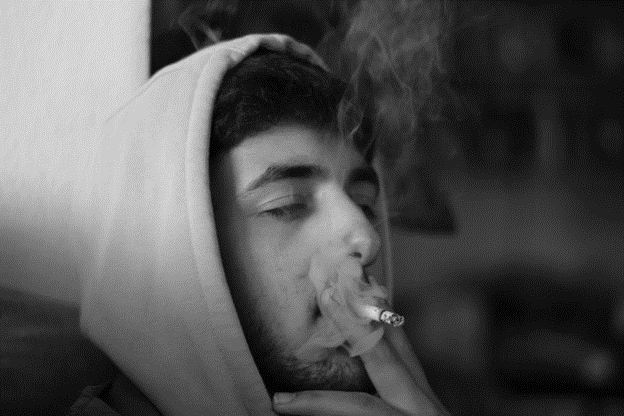Guns roar, tires screech, and then a character lights up. Cannabis pops up in action movies more than many viewers expect. Sometimes it is a one-beat gag. Other times it shapes a chase, a fight, or a character’s choices.
Fans bring their own knowledge to these scenes. Some already shop online or read product pages at Cheap Cannabis, so they notice strain talk, loose slang, or props that look real. Others are new to the topic and just want to know why it shows up in a high-speed story at all.
Why It Shows Up
Writers use cannabis for quick character work. One puff can signal that a hero is laid back, stressed, or out of his depth. It can also shift tone. A tense setup can turn into awkward humor, then snap back to action in seconds.
Cannabis also helps with pacing. Before a big raid or chase, a short “downtime” scene can make the next set piece hit harder. A little banter around a joint gives the audience a breather. Then the plot slams forward again.
Finally, some stories use it as a plot device. A character might hide product in a glove box, lose a stash in a shootout, or mistake something stronger for standard weed. This can push the hero into trouble, force a new alliance, or trigger a fight.
Moments Fans Still Talk About
Many viewers point to the action-comedy “Pineapple Express” for obvious reasons. The film turns a dealer and his client into fugitives. Their use is central to the tone, and it fuels several chase scenes and clumsy fights.
The humor lands because the action is played straight while the leads stumble through chaos.
Quentin Tarantino’s “True Romance” has a lighter touch. Floyd, the roommate on the couch, keeps smoking while danger closes in.
He is not the lead, yet his mellow state adds contrast to the hard criminal world outside the apartment. The joke pays off in a tense moment, and it helps the final act feel bigger by comparison.
In “Jackie Brown,” casual use pops up in quiet scenes. These moments sketch character habits and trust. They do not drive the gunplay, but they color the mood and show who is comfortable with whom. When the heist gears turn, those small details make relationships feel real.
“Training Day” uses a harsher turn. What looks like a casual smoke is not what it seems, and the rookie’s judgment slips during a high-risk patrol. The scene sets up later violence and raises the stakes. Viewers still debate it because the line between use and manipulation is sharp.
What Filmmakers Get Right
Some films show that cannabis can slow reaction time and split attention. In fast fights or car scenes, a character’s delay, missed punch, or late brake press can feel true to life.
Public health sources note that cannabis can affect attention, memory, and coordination, which matter in action beats and driving scenes.
Props also look more accurate now. Joints are rolled in a way that matches how people actually roll. Vapes appear with correct form factors. Bag labels sometimes mimic common strain names. These touches help the scene sell the moment without long dialogue.
Another realistic detail is social context. Many scenes show use in private spaces, among friends or partners, before a night out.
When the door bursts open and trouble arrives, the relaxed setup turns into a scramble. That contrast mirrors how unexpected stress can feel worse when someone is high.
What Movies Stretch or Skip
Movies often speed up time. A character may take one puff and act extremely impaired seconds later, even during a sprint or shootout. In real life, onset can vary with method and dose.
Edibles usually take longer, while inhaled smoke or vapor is faster. Films collapse these differences to keep momentum.
They also mix products for drama. Some scenes blur cannabis with unknown powders or pills. This can confuse viewers about effects. A film may show hallucinations, blackout-style memory loss, or sudden rage.
Those are not typical cannabis effects, but they raise tension quickly on screen.
Finally, legal consequences appear and vanish as the plot requires. In one city scene, a cop might ignore a joint. In the next, a small bag becomes a major charge. Real laws vary by country, state, and even city.
Action scripts often dodge the details to keep focus on stunts and twists.
Tone, Ratings, and Regional Cuts
Action films must balance tone and rating targets. A studio chasing a wider audience might keep use off camera or frame it as a quick joke.
Another film might show clear consumption because character truth matters more than rating pressure. Regional cuts can remove a smoke shot or change a line to fit local rules.
The same story can feel different after editing for streaming or broadcast. A brief cloud or a close-up of a lighter may disappear, and with it a clue about a character’s choice or state of mind. Fans notice these small changes and debate whether the scene lost rhythm or clarity.
Tips for Viewers Who Care About Accuracy
If you watch action films with an eye for realism, look for simple tells. Does the character’s timing slow? Do they forget a step in a plan?
Are they more cautious or more careless? These small behaviors match known effects on short-term memory and attention, which can change how a chase or fight plays out.
Also watch how other characters respond. Friends might joke, cover for the user, or step up during a risky move. Enemies may exploit the moment. These reactions can feel more true than the smoke itself, and they often shape the next stunt or gunfight.
Finally, separate product from plot. If a scene stacks many substances or hides a twist, treat the behavior as a dramatic choice, not a field guide. The goal is tension and payoff, not education.
How This Helps the Action Community
Action fans love detail. We break down stunt rigs, gun handling, and driving lines. Treat on-screen cannabis the same way. Spot when it adds character or changes stakes. Call out when it turns into a shortcut for laughs.
This sharp eye makes discussion richer and keeps attention on craft rather than shock value.
Writers and filmmakers can also benefit. Thoughtful use can set rhythm, signal trust, or show stress without long speeches. Careful research, accurate props, and clear cause-and-effect let the stunt team’s work shine while the character’s choices still feel grounded.
A balanced view helps everyone. Fans get better stories. Creators keep tension high. And conversations stay clear about what is real and what is movie magic.

Photo by Korkut Mamet
Takeaway
Enjoy the set pieces, notice the small beats, and read on-screen use as a tool, not a lesson. If a scene seems wrong, assume the cut served the stunt, the joke, or the rating. That lens makes the next car flip or hallway fight even more fun to watch.






